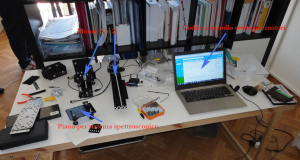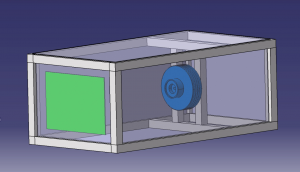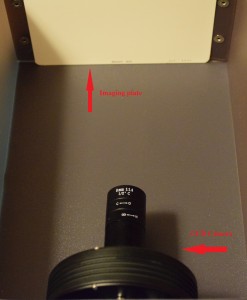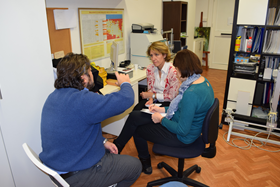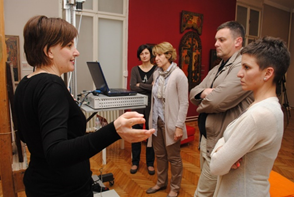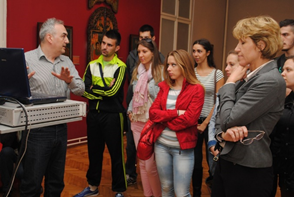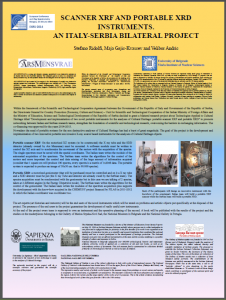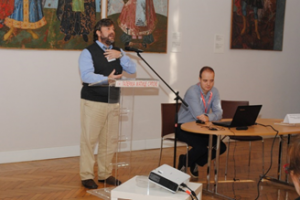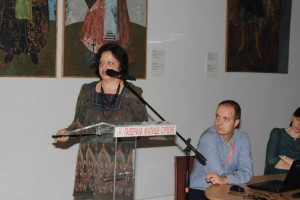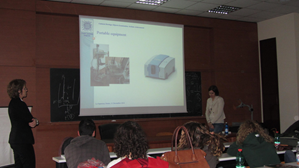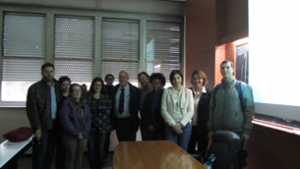Bilateral cooperation with Republic of Italy
Within the framework of the Scientific and Technological Cooperation Agreement between the Government of the Republic of Italy and Government of the Republic of Serbia, the Directorate General for Country Promotion (Economy, Culture and Science) – Unit for Scientific and Technological Cooperation of the Italian Ministry of Foreign Affairs and the Ministry of Education, Science and Technological Development of Republic of Serbia initiate the Executive Programme of Scientific and Technological Cooperation for the years 2013-2015. In the group of Joint Research Projects of “PARTICULAR RELEVANCE” (“Progetti di Grande Rilevanza” ai sensi della l. 401/90) – Section: Technologies Applied to Cultural Heritage, the project Development and implementation of two novel portable instruments for the analyses of Cultural Heritage: portable scanner XRF and portable XRD, (Number: PGR00154) has been approved for financing.
Objectives: The goal of the project is to design, develop and implement two innovative portable instruments. Each team will build, with the help of the counterparts, the new instrument. At the end of the project each team will own a instrument and will own the full operative procedure to build the second one.
The Italian private company Ars Mensurae build all his business on the need of in-situ non-invasive analytic techniques and therefore on the development of innovative instrumentation. The Serbian counterpart is building the awareness of finally opening a Spin Off. From a scientific point of view the development of portable XRF scanner and portable XRD are of great importance because portability hides big problems such as weight, stability, endurance, speed and easiness of use that, up to now, were not yet totally solved by the scientific community and their industrial partners. As a manner of fact the XRF scanners and portable XRD present in the market are not yet portable but only transportable. The Italian and Serbian teams have all the know-how to fulfill the goals of the project. They only need to put together their know-how.
Participants
Italian Team:
Stefano Ridolfi-Project Leader, Ars Mensurea, Rome, Italy
Giovanni Gigante-Professore Ordinario, Università di Roma “La Sapienza”, Rome, Italy
Fabio De Chirico-Soprintendente Umbria e Calabria, Perugia, Italy
Ilaria Carocci-Restauratrice, Ars Mensurea, Rome, Italy
ChiaraDel Bosco-Tecnologo per i beni culturali, Rome, Italy
Serbian Team:
Maja Gajić-Kvaščev, PhD-Project Leader, Vinča Institute of Nuclear Sciences, Belgrade, Serbia
Velibor Andrić, Vinča Institute of Nuclear Sciences, Belgrade, Serbia
Daniela Korolija-Crkvenjakov, PhD, Gallery of Matica srpska, Novi Sad, Serbia
Milica Marić-Stojanović, MA, National Museum in Belgrade, Belgrade, Serbia
Current achievements
Instrument construction:
Portable XRF Scanner-Current phase
Portable XRD-Construction phase
Technical Meeting-14-20 December 2014, Rome Italy
Italian & Serbian Team members during working session at Ars Mensurea Laboratory
Selected results
May 2014: Open laboratory at the Gallery of Matica srpska, Novi Sad, Serbia
June 2014: Project presentation at EXRS, European Conference on X-Ray Spectrometry, Bolgna, Italy
November 2014: Participation to Scientific Meeting-LANTERNA 2014, Gallery of Matica srpska, Novi Sad, Serbia
November 2014: Lecture to the students of the University of Rome La Sapienza, Erasmus mundus master ARCHMAT
Selected publications
1. M. Grujic-Brojcin, D. Rogic, M. Gajic-Kvascev, M. Scepanovic: The Application of Raman Spectroscopy in Cultural Heritage: A Preliminary Study of Blue Pigments from Fresco Painted Tombs from Viminacium, Proceedings of the first Italian – Serbian Bilateral Workshop on “Science for Cultural Heritage”, Associazione Italiani e Serbi Scienziati e Studiosi, Belgrado, 2014, 111-117, http://www.ais3.ac.rs/publications/
2. Maja Gajic-Kvascev, Velibor Andric: Portable EDXRF analytical technique in Cultural heritage: advantages and challenges, Proceedings of the first Italian – Serbian Bilateral Workshop on “Science for Cultural Heritage”, Associazione Italiani e Serbi Scienziati e Studiosi, Belgrad, 2014, 119-125, http://www.ais3.ac.rs/publications/
3. Aleksa Jelikic, Vanja Jovanovic, Gordana Jaukovic, Velibor Andric, Maja Gajic Kvascev: Multianalytical study of Petar Lubarda’s painting Nokturno I, Proceedings of the first Italian – Serbian Bilateral Workshop on “Science for Cultural Heritage”, Associazione Italiani e Serbi Scienziati e Studiosi, Belgrado, 2014, 139-144, http://www.ais3.ac.rs/publications/
4. Radmila Jancic-Heinemann, Dragan Milovanovic, Vesna Svoboda, Maja Gajic-Kvascev, Suzana Polic Radovanovic, Mila Popovic Živancevic, Julka Kuzmanovic Cvetkovic, Slobodan Obradovic, Mišel Radulac: Image analysis in service of experimental archaeology-ceramic materials from Serbian excavation sites, Proceedings of the first Italian – Serbian Bilateral Workshop on “Science for Cultural Heritage”, Associazione Italiani e Serbi Scienziati e Studiosi, Belgrad, 2014, 145 -150, http://www.ais3.ac.rs/publications/
5. Stefano Ridolfi, Maja Gajic Kvascev, Velibor Andric: Scanner XRF and Portable XRD Instruments. An Italy-Serbia bilateral project, Book of abstracts of the European Conference on X-Ray Spectrometry-EXRS 2014, 15-20 June 2014, Bologna, Italy
6. Maja Gajic-Kvašcev, V. Andric, D. Korolija Crkvenjakov, G. Kvašcev, S. Gadžuric, S. Ridolfi: Feature extraction from paint layer EDXRF spectra using pattern recognition techniques, Book of abstracts of the 5th ed. CMA4CH 2014, Mediterraneum Meeting, Employ the Multivariate Analysis and Chemometrics in Cultural Heritage and Environment Fields, 14-17 December 2014, Rome, Italy, http://www.cma4ch.org/14/curricula.html
7. S. Ridolfi: Educational Yard, an original way to test instruments and teach physics, First LANTERNA, 03 November 2014, Novi Sad, Serbia
8. Daniela Korolija Crkvenjakov: Ikone XVIII veka na razmeđi između tradicije i modernosti – uvod u sistematsku studiju slikarskih materijala i tehnika ikonopisa baroknog doba (XVIII Century Icons Between Traditional and Modern-Introduction to Systematic Study icon paint materials and techniques), First LANTERNA, 03 November 2014, Novi Sad, Serbia
9. Milica Marić Stojanović: Tehnike jonskog snopa primenjene na ispitivanju rimskog stakla (Ion Beam Techniques applied to Roman Glass Examination), First LANTERNA, 03 November 2014, Novi Sad, Serbia
10. Velibor Andrić: Savremeni trendovi u proučavanju kulturnog nasleđa – neinvazivnost i
nedestruktivnost (Novel Trends in Cultural Heritage Examination-Non Invasiveness and Non Destructiveness), First LANTERNA, 03 November 2014, Novi Sad, Serbia
Press
11.05.2104. Dnevnik Newspapers (in Serbian)
